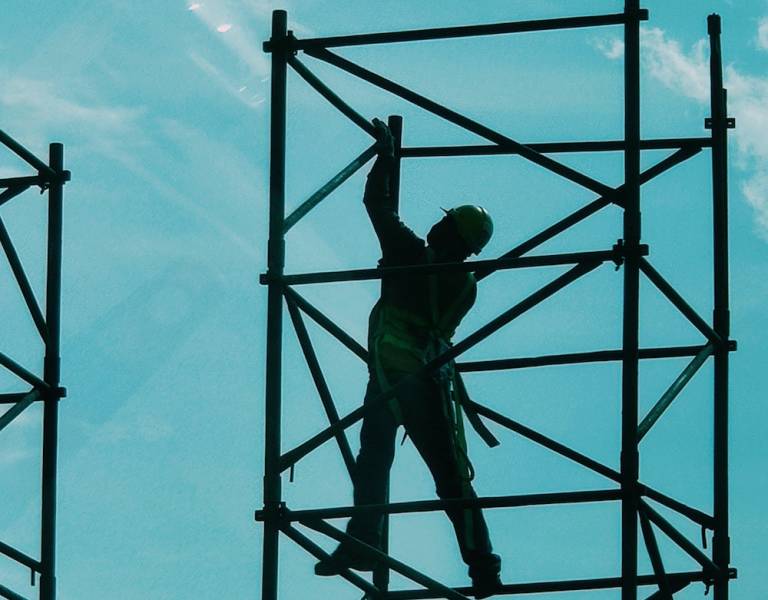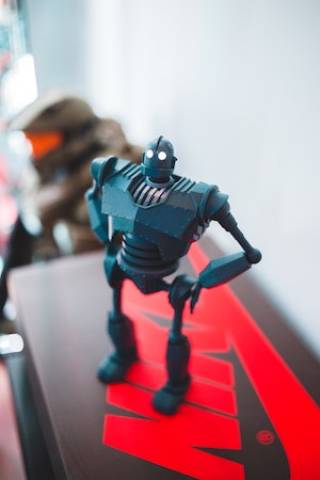Blog: A Tissue Engineer Mentored by Nature
5 February 2021
Dr Nazia Mehrban is a UCL Ear Institute Senior Research Fellow and an Institute of Healthcare Engineering Impact Fellow. She tells us the story of her unique background and the lessons she learnt towards building implantable materials towards engineering new tissue.

Disease, damage and ageing. How do you fix tissue that is deteriorating? Most people would say that’s the surgeon’s job. But what if that does not work? What are your options?
This is where tissue engineering comes in. This involves the isolation of a few healthy cells from the patient, growing them in a lab and introducing them back into the patient to repair the damaged site either with or without the support of materials to hold the cells in place. I specialise in producing materials that support cells. They are like scaffolding on a building. They also give the cells and surrounding tissue instructions and cues on building new healthy tissue, often through additional chemistry and sometimes physically. These ‘smart’ materials lay the foundations for restoring tissue function in the patient.
I spend the majority of my time studying nature; trying to take apart existing structures, like proteins, in order to understand how to build new materials. The more ‘natural’ the materials are the more likely they are to be accepted by the body. This isn’t too far removed from taking apart a toy and trying to put it back together to understand what made it move. Except my toys are proteins. By understanding the ‘Lego bricks’ that make the proteins work in a certain way (known as amino acids) I have built new materials that can communicate with cells. I have added chemical instructions into my materials that tell the cells to move in a specific direction. I can also make the cells attach to their surroundings. I can instruct the cells to grow and cover a wound site. Most importantly I can make the cells behave in a way that is expected in healthy tissue within the body.
However, creating smart materials in a lab is a different matter to introducing them into the body. In the lab we can control the environment. We control what we give to the cells to keep them alive and we control the environment around them. In the body, the cells (and materials) are surrounded by other tissues and all of these surrounding tissues have their own chemistries and stiffnesses which may not match our material. We also need to remember that as the patient moves after the surgery then so does our material. Finally, there is the immune response; the body’s natural defence mechanism that may be triggered by any new and unrecognisable materials entering the area. I therefore try to deal with these issues at the beginning, i.e. at the design stage. The materials are designed to function best at body temperature. The amino acids I use (the Lego bricks I referred to earlier) are all natural and I try to match the stiffness and chemistry early on in the process. I can tune the materials in a controlled way in the lab to reduce the chance of unwanted surprises further down the line. In this way I have tailored the materials towards repairing neural tissue, skin and fat though the applications are endless. Working with scientists in the US I have also shown that the materials have a positive effect on the body and provide the necessary instructions for the body to repair wounds.
Designing materials for the human body is not an easy task. The materials I create are a product of lengthy conversations and valuable input from biologists, chemists, engineers, clinicians and roboticists. You may be wondering why roboticists are on the list. When we mention robots people think a human-like android. This is one interpretation of course but in the medical world we use the term to mean instruments that help in surgical procedures for example and even moving devices implanted into the body. It is this last example that I am interested in.

The progress I, and other researchers, make is highly dependent on the research funding bodies. Thankfully countries around the world recognise the importance of funding innovation in healthcare. Similarly, in the UK the funding for Transformative Healthcare Technologies remains a strategic priority (as described in the House of Lords January 2021 report on ‘Ageing: Science, Technology and Healthy Living’. With the funding future looking bright I hope to continue making progress in my research towards nature-inspired tissue engineering.
For updates on this research please follow @NMehrban and @Health_Eng on Twitter.
 Close
Close

